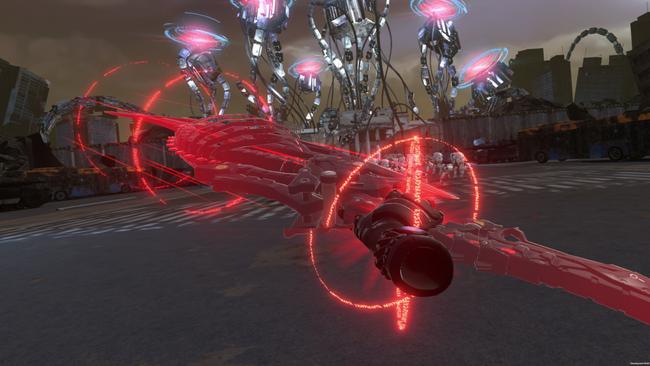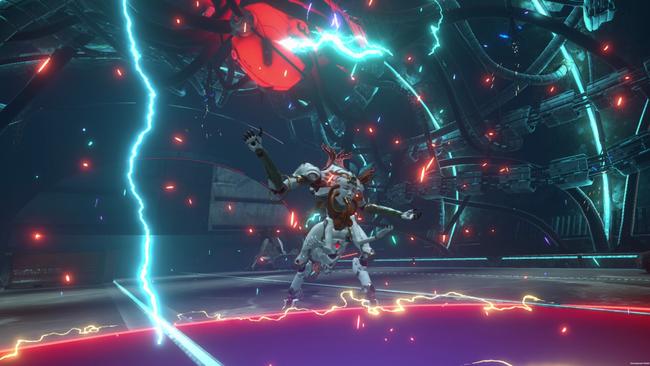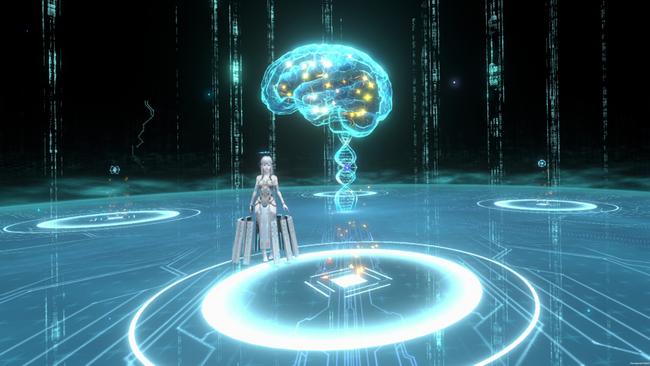
Soul Covenant Review
The moment Soul Covenant was revealed - a spiritual successor to Soul Sacrifice, one of my favorite games of all time - I knew I was going to buy some sort of VR headset to play it, come launch. Something about Soul Sacrifice, its combination of an edgy aesthetic and storytelling drew me to its world, and while its gameplay wasn't anything special - especially prior to the game's updated release in Soul Sacrifice Delta - it more than did its job. It remains my favorite PlayStation Vita exclusive, bar none. So, to say that my hopes were high for Soul Covenant would be to put it mildly. I wish I could say that Thirdverse delivered everything I wanted; indeed, there's aspects of Soul Covenant that remind me of what I loved of Soul Sacrifice. Yet it's buried beneath what is otherwise a mediocre action RPG, that takes too long to really hit its stride - and never fully gets there in the end.
First things first; Soul Covenant is a VR action game. Players make use of weapons called "Scapegoats", build from the literal remains of fallen comrades. As the story progresses, players will unlock new weapon types as former allies meet their end in the fight. Conceptually, this is incredibly cool - and the designs for each weapon, down to the fact that you can see the reinforced spines of your former allies is such a neat touch. Making things even cooler, every weapon has an alternate stance when players dual-hand the weapon. One can turn from a sword to a scythe; another, from a dualblade to a halberd that can fire projectiles when swung in a straight arc. One can even separate from an axe to dual swords that can charge up energy, and then shoot out a cross-shaped blast when both blades are used in tandem.

On paper, it sounds like these weapons will all feel radically different during the heat of battle. Yet, that's not really the case in reality. While later boss fights will challenge players to practice proper spacing between themselves and the bosses, dodge timing, and even perfect guards and parries... most of the fights from the first half of the story are woefully easy, and can be dealt with by just flailing your arms around with little regard. At the start of a boss encounter, you'll be asked to scan for weak points - but as a feature, this feels threadbare. You do it once at the start of battle by raising your hand to your temple and then never again for the rest of the fight, as the weak points will remain glowing indefinitely. Enemies outside of the main boss amount to little more than a minor distraction until the latter sections of the story, too.
What's especially frustrating is seeing later bosses mix things up a notch; the final boss in particular uses by far the most interesting attack strings in the game, and uses actual mechanics you'll regularly contend with during the fight. Level geometry, which felt merely like set dressing in prior missions, has a direct purpose in dodging several of his attacks. It's possible that postgame fights will give the game's other bosses moves similar to it, but as of the writing of this review I've been unable to get a single multiplayer match going. I don't appear to be impacted by the bug that others have been facing that prevents them from making lobbies, but enough players on both PC and PlayStation 5 have been completely unable to get matches going that the online lobbies are a ghost town. It's a shame, too. If the game's latter moments are a hint for what's to come in the postgame, I'd loved to have checked them out - even if it I fear it won't be enough to allay the game's biggest problem, that being the presentation.

Visually, the game looks quite nice. Yet, the textures are rather low resolution, and level geometry - as mentioned earlier - is rather sparse. I can only imagine that this was a result of the game having to run on a Meta Quest 2; while I played the game via a Meta Quest 3, I did so on the PC version of the game, which completely lacks graphics options of any kind. I would've loved for an option for higher resolution textures, as the quality of the ones on offer stick out like a sore thumb. The major problem, however, comes down to how much the game reuses the same locations. Almost every chapter seems to end in the same underground bunker, with the same exact aesthetic; it all blends together. Even the changes that some areas see late in the story are so minor, and don't meaningfully change their appearance in any significant way.
The same is true, to a lesser degree with how the game presents its story. The vast, vast majority of story scenes are showcased through a projected slideshow, as the game narrates these crucial story events as they happen. While Soul Sacrifice did something similar, this just doesn't work in VR - making matters worse is that the game does have a few fully animated scenes. Unsurprisingly, these end up being some of the most memorable in the game. Soul Covenant's story is conceptually quite cool, and I still ended up enjoying it overall; yet much like the rest of the experience, it feels constrained by the project's overall scope.

Soul Covenant is one of those games that is frustratingly close to delivering what I wanted it to. RPG progression, while basic, would be engaging if the game had enough content outside of the main story to compliment it through its runtime; the story could've been so much more with more scenes to sell it. Despite it all, Soul Covenant managed to recapture at least some of the feelings I remembered from Soul Sacrifice - but in a way that makes the whole package all the more disappointing. I believe the team had the capabilities to deliver something truly special here. It's just a shame that what they ultimately released is such a mixed bag.